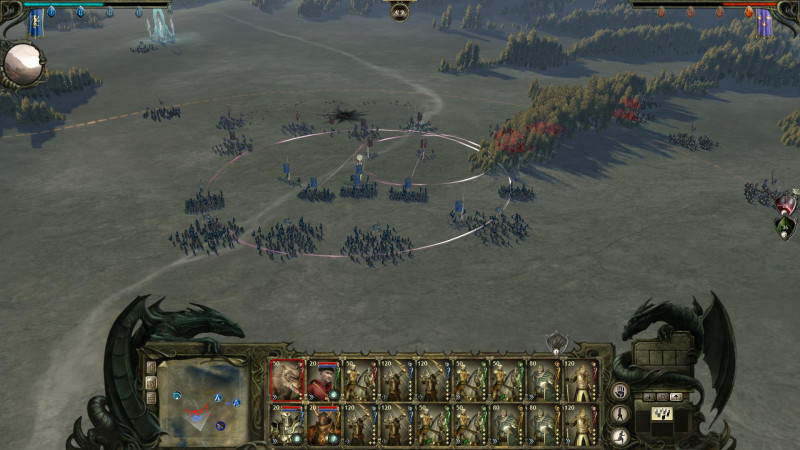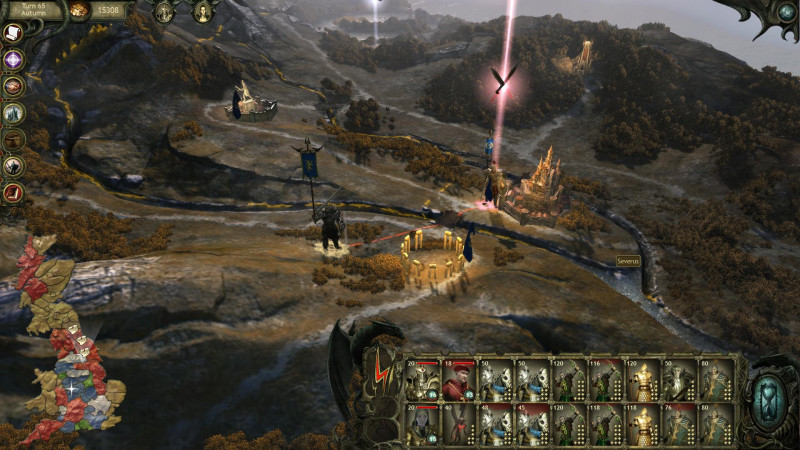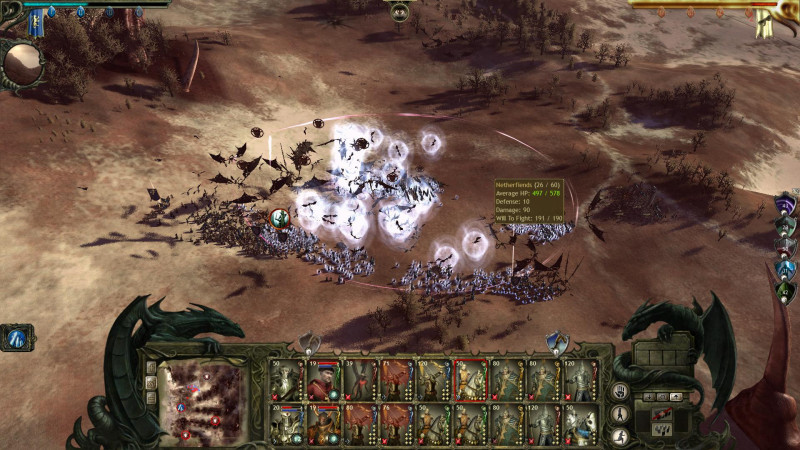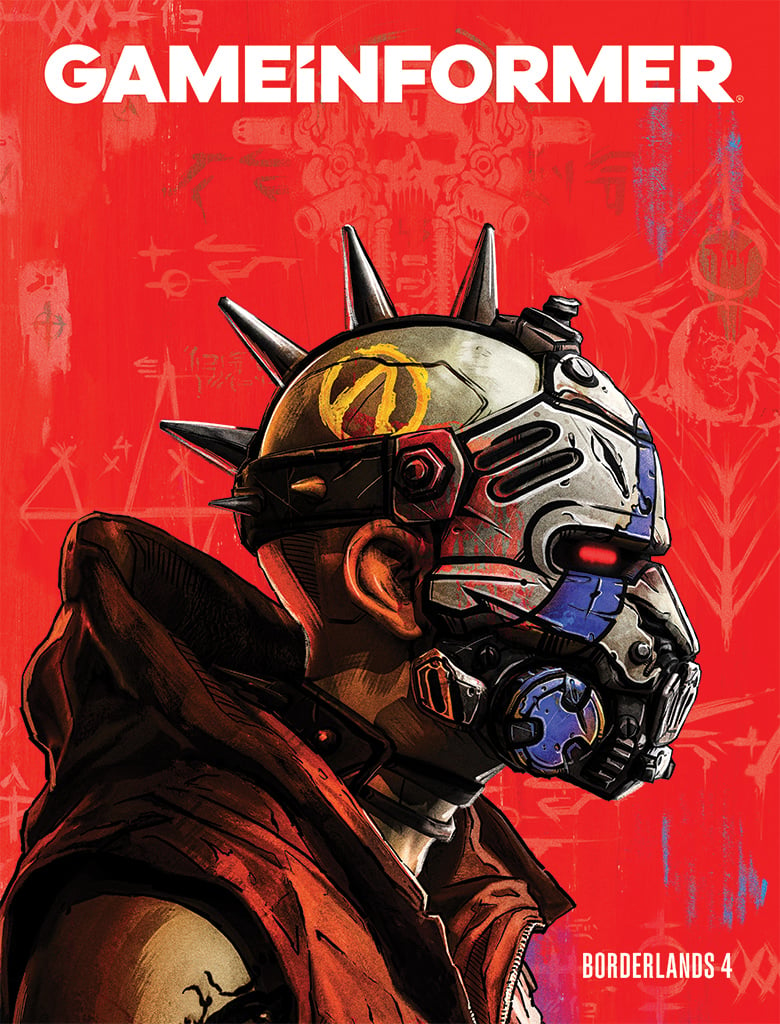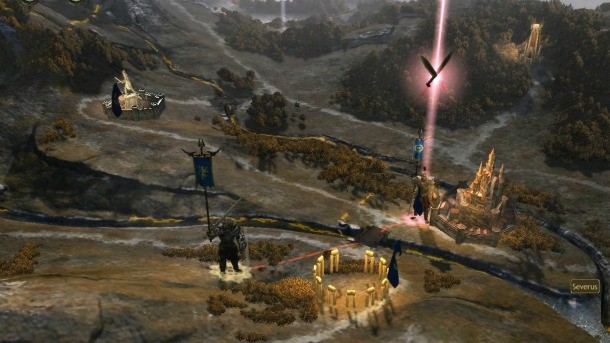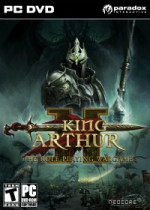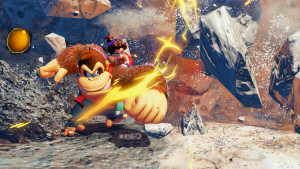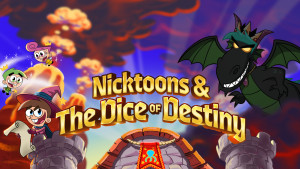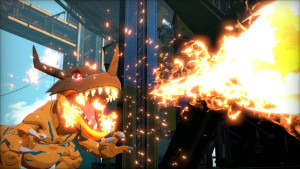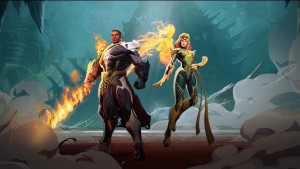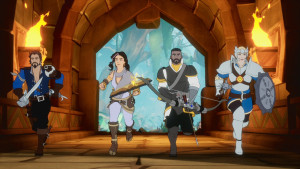Borderlands 4 debut issue is already available for Digital subscriptions. Subscribe Now!
King Arthur II: The Role-Playing Wargame Review
Adventuring through a beautiful strategic map of Britain, recruiting powerful warriors, and solving quests to unravel the mystery behind Merlin’s disappearance and Arthur’s mortal wound is a formula as original as anything in games. Even better, King Arthur II puts you in command of massive Total War-style battles as you try to turn back the demonic tide overwhelming the land. Both sides of the coin suffer from serious shortfalls, though, and ultimately the AI is a foe so unworthy that it’s boring to play against.
Don’t let the screenshots fool you – King Arthur II is an RPG with tactical battles, not an empire-building strategy game. The choices you make on the turn-based strategic layer are extremely limited. With a single army, all you’re really deciding is which quest to embark on at a given turn. You eventually have three stacks to command, but in the absence of province-based income or upkeep costs, the strategic map is nothing more than a fancy way to choose which adventure to undertake. There are a few other extremely minor decisions to make, like which five percent boost to build in which province, but the strategy layer is very constrained. That isn’t a problem in itself, but don’t go in thinking this is some kind of Total War or Civilization.
Outside of the regular appearance of choose-your-own-adventure text-based interludes – which are well written, competently voiced, and tell a solid dark fantasy – the bulk of the game is contained in the tactical battles. Directing 1,000-plus soldiers and legendary heroes across huge maps is great fun. Working the usual cavalry-infantry-archers triangle is a delightful mental exercise at first, especially with all the wrenches that King Arthur II throws into the mix: flying monsters, dozens of spells, forest concealment, formations, etc. Unfortunately, the AI is entirely incapable of being even a minor speedbump once you learn how to play the game.

At first, your computer-controlled opponents seem competent enough. They protect their archers from cheap flanking tactics, throw spells at reasonable targets, and successfully use cavalry charges to overwhelm lesser units. Around the time your heroes hit ninth level, though, you can stack enough bonuses and modifiers to become nearly unbeatable as the AI utterly fails to properly counter powerful spellcasters. You have to put in a real effort to lose; exploiting the spell shield system is trivial, a 40-second cooldown spell can wipe out any regular unit, and you’ve got three heroes slinging deadly magic.
My suspicions about the AI’s incompetence were confirmed when I cranked the difficulty up to its Nightmare maximum and assaulted a major enemy stronghold. Our armies were evenly matched on paper, though I had a slight advantage in hero levels. The map, however, was dramatically stacked against me. The AI defenders had indisputable control over six powerful victory locations that provide huge global buffs to their army though those critical locations are normally evenly distributed, and I had to work my way uphill through a series of gates.
I lost 46 men to the AI’s 1400.
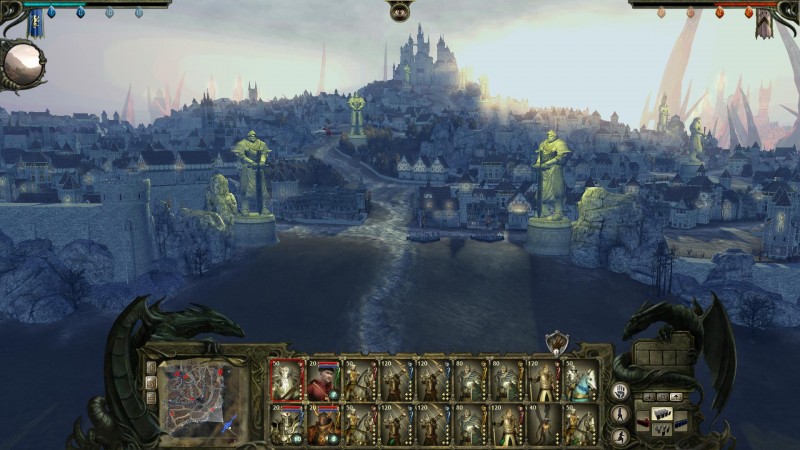
I play a lot of this type of game, but I’m hardly Sun Tzu over here. When the AI can’t make me pay with a little attrition with a map stacked heavily in its favor, finding value in the tactical battles is difficult. My spellcaster-focused strategy shouldn’t be unbeatable, since there are plenty of ways to counter them: tying them up in melee combat, putting more effort into taking their mystical defenses down or keeping yours up, or playing a more aggressive style that prevents their cooldowns from cycling are all solid strategies. The AI doesn’t use them at all, though, and simply can’t compete once the tactics go much past “run your blob of guys at their dudes and see who wins.” This is a crying shame, because the framework is in place for a truly excellent experience.
If and when Neocore patches the AI into respectability, even if that’s in conjunction with letting it cheat with damage/HP numbers under the hood, I’ll be the first one to jump in and dump a hundred hours into King Arthur II. For now, I’ll play something that’s at least half a step beyond shooting fish in a barrel.

